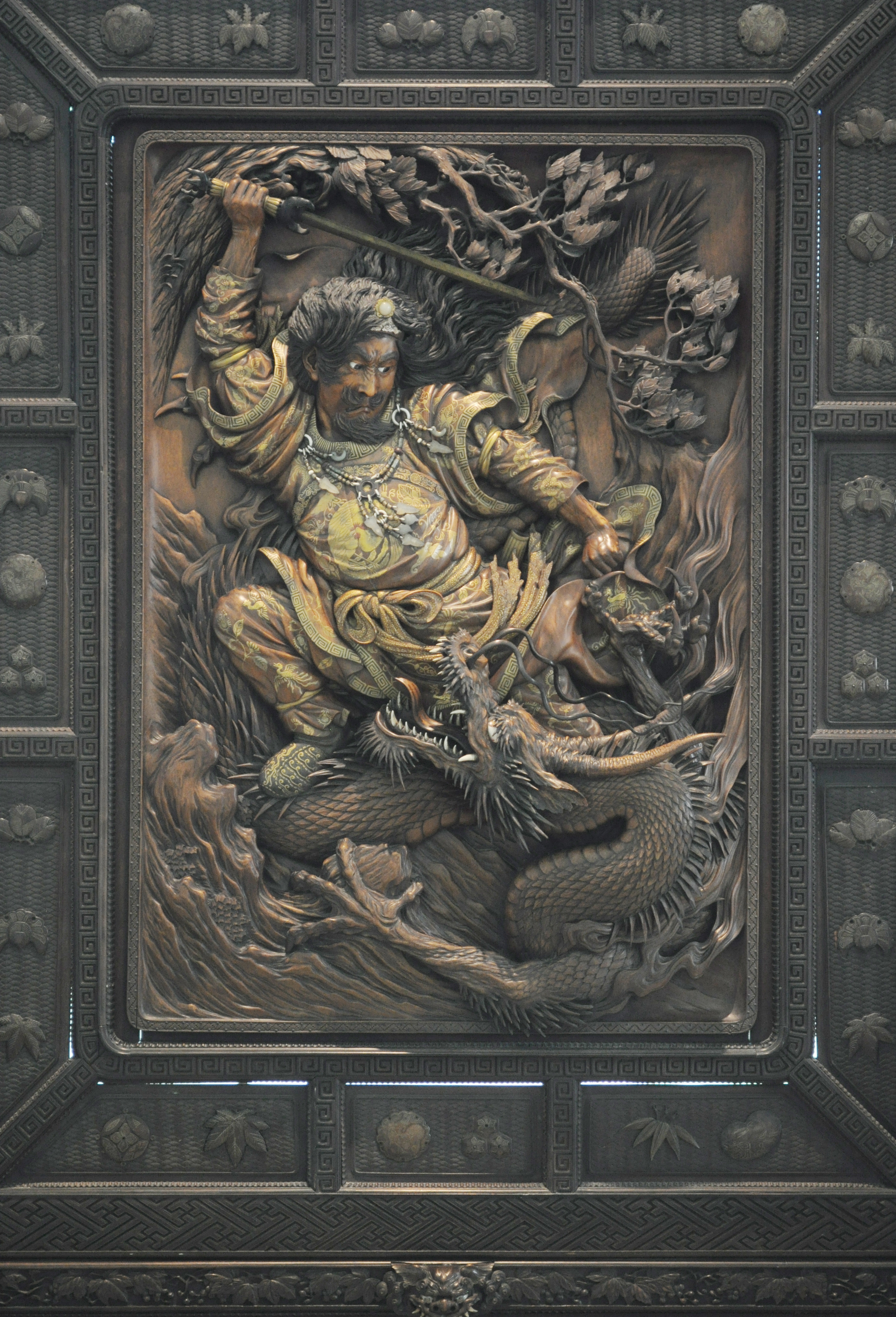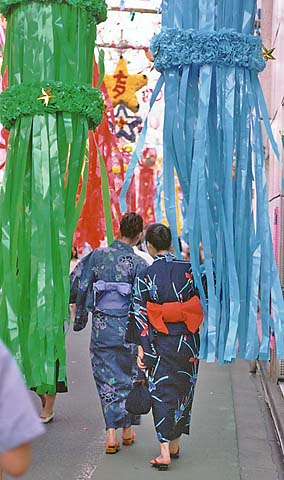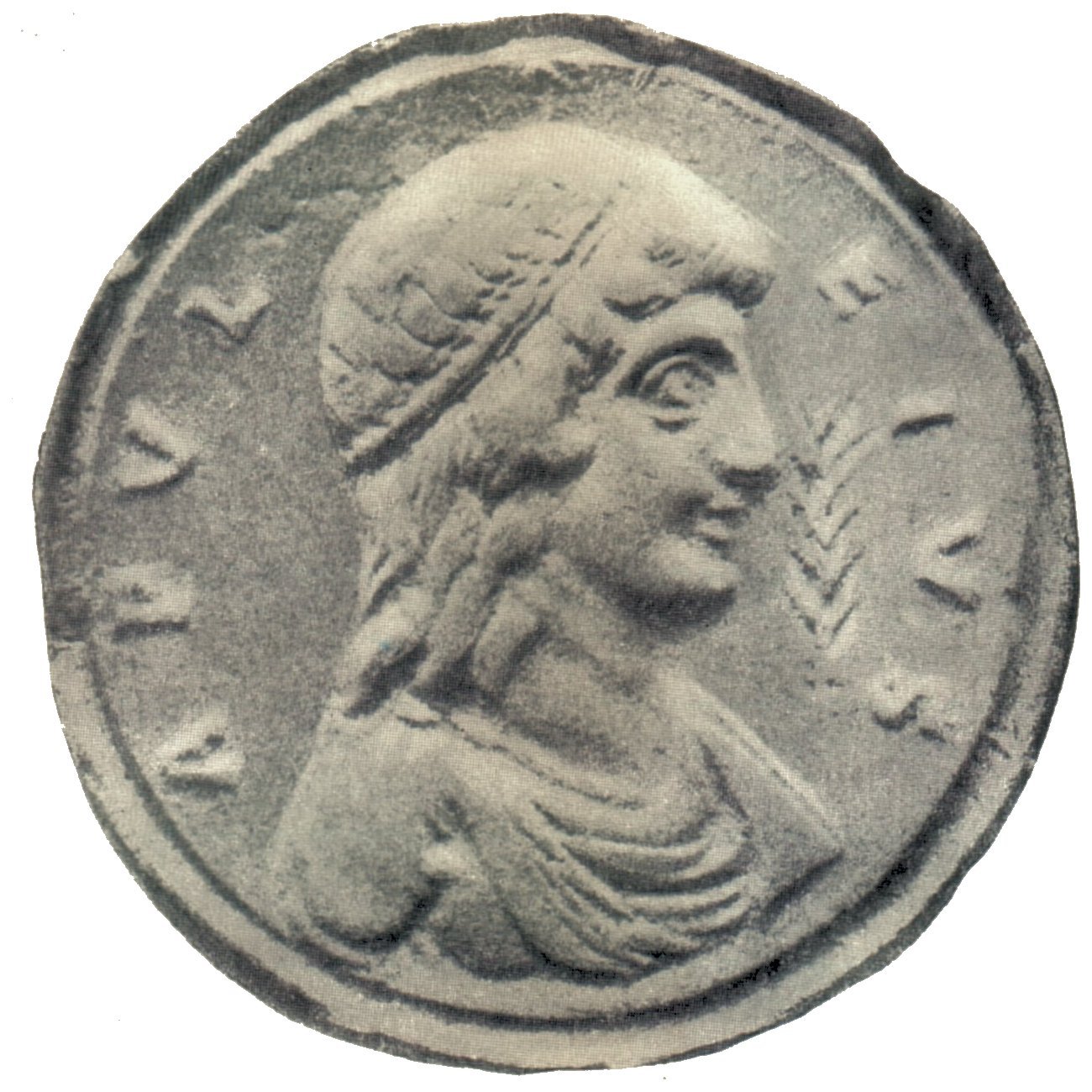|
Ame No Wakahiko
Ame no Wakahiko (天若日子, 天稚彦 Heavenly Young Boy) in some versions of Japanese mythology is a god of grains, and the son of Amatsukunitama. Mythology Sent to earth In many versions, when Ame no Hohi did not send word for three years, all the gods gathered up, and Ame no Wakahiko was one who was chosen to rule the earth. In many versions Amenowakahiko was given a bow. In some versions, however, Ame no Wakahiko is the son of Ame no Hohi and Ame no Wakahiko was sent to earth to look for him. Death In some versions, Ame no Wakahiko fell in love with Shitateruhime. Eight years later, after not receiving no report back, the gods sent a bird named Nakime down to earth to check in on him. Ame no Wakahiko, with his bow, shot the bird. The arrow pierced through the bird, but the arrow flew all the way to heaven. Takamimusubi saw the arrow and threw it back at the earth where it hit Ame no Wakahiko while he was laying in bed, killing him. Other versions state that Amate ... [...More Info...] [...Related Items...] OR: [Wikipedia] [Google] [Baidu] |
Japanese Mythology
Japanese mythology is a collection of traditional stories, folktales, and beliefs that emerged in the islands of the Japanese archipelago. Shinto and Buddhist traditions are the cornerstones of Japanese mythology. The history of thousands of years of contact with Korea, Ainu, and Okinawan myths are also key influences in Japanese mythology. Japanese myths are tied to the topography of the archipelago as well as agriculturally-based folk religion, and the Shinto pantheon holds countless ''kami'' ( Japanese for " god(s)" or "spirits"). This article will discuss cosmogony, important deities, modern interpretations, cultural significance, and the influence of these myths. Two important sources for Japanese myths as they are recognized today are the '' Kojiki'' and the '' Nihon Shoki''. The ''Kojiki'', or "Record of Ancient Matters," is the oldest surviving account of Japan's myths, legends, and history. Additionally, the ''Shintōshū'' describes the origins of Japanese deities ... [...More Info...] [...Related Items...] OR: [Wikipedia] [Google] [Baidu] |
Noriko T
is a Japanese given name for females. Possible writings * 徳子, "benevolence child" * 法子, "method, law child" * 則子, "rule child" * 紀子, "chronicle child" * 教子, "teach child" * 範子, "pattern child" * 典子, "rule, precedent, ceremony child" * 規子, "standard, measure child" * 憲子, "constitution child" * 稔子, "child who harvests wisdom and knowledge" People with the name * Noriko Arai, Japanese female wheelchair racer * Noriko H. Arai (born 1962), Japanese mathematical logician and artificial intelligence researcher *, Japanese swimmer * Noriko Awaya (淡谷 のり子, 1907–1999), Japanese singer * Noriko Hidaka (日高 のり子), Japanese voice actress * Noriko Higashide (東出典子), Japanese actress *, Japanese Paralympic swimmer *, Japanese singer and actress * Noriko Kijima (木嶋のりこ), Japanese actress and gravure model *, Japanese sport shooter *, Japanese fencer * Noriko Matsueda (松枝 賀子), Japanese video game composer * Nori ... [...More Info...] [...Related Items...] OR: [Wikipedia] [Google] [Baidu] |
Shinto
Shinto () is a religion from Japan. Classified as an East Asian religion by scholars of religion, its practitioners often regard it as Japan's indigenous religion and as a nature religion. Scholars sometimes call its practitioners ''Shintoists'', although adherents rarely use that term themselves. There is no central authority in control of Shinto, with much diversity of belief and practice evident among practitioners. A polytheistic and animistic religion, Shinto revolves around supernatural entities called the . The are believed to inhabit all things, including forces of nature and prominent landscape locations. The are worshiped at household shrines, family shrines, and ''jinja'' public shrines. The latter are staffed by priests, known as , who oversee offerings of food and drink to the specific enshrined at that location. This is done to cultivate harmony between humans and and to solicit the latter's blessing. Other common rituals include the dances, rites of pa ... [...More Info...] [...Related Items...] OR: [Wikipedia] [Google] [Baidu] |
Japanese Gods
This is a list of divinities native to Japanese beliefs and religious traditions. Many of these are from Shinto, while others were imported via Buddhism or Taoism and were "integrated" into Japanese mythology and folklore. Major kami * Amaterasu-Ōmikami (), she is the goddess of the sun as well as the purported ancestress of the Imperial Household of Japan. Her name means "Shines from Heaven" or "the great kami who shine Heaven". For many reasons, one among them being her ties to the Imperial family, she is often considered (though not officially) to be the "primary god" of Shinto. * Ame-no-Uzume ( or ) Commonly called Uzume, she is the goddess of dawn and revelry in Shinto. * Fūjin () Also known as , he is the Japanese god of the wind and one of the eldest Shinto gods, said to have been present at the creation of the world. He is often depicted as an oni with a bag slung over his back. * Hachiman () is the god of war and the divine protector of Japan and its people. Origi ... [...More Info...] [...Related Items...] OR: [Wikipedia] [Google] [Baidu] |
Kuni-yuzuri
The was a mythological event in Japanese prehistory, related in sources such as the ''Kojiki'' and the '' Nihon Shoki''. It relates the story of how the rulership of Japan passed from the earthly ''kami'' (''kunitsukami'') to the ''kami'' of Heaven (''amatsukami'') and their eventual descendants, the Imperial House of Japan. Background The ''Kojiki'' and the ''Nihon Shoki'' both relate that the Japanese archipelago were created by the primordial couple Izanagi and Izanami, who also brought forth many gods into existence, three of which – Amaterasu, Tsukuyomi and Susanoo – were appointed to govern the sky (Takamagahara, the 'Plain of High Heaven'), the night, and the seas, respectively. Susanoo, expelled by Izanagi either because he refused to perform his allotted task of ruling the sea (''Kojiki'') or his impetuous nature (''Nihon Shoki''), went to Takamagahara to see his sister. Suspected of insurrection, Susanoo protested his innocence, at which the two gods underwent ... [...More Info...] [...Related Items...] OR: [Wikipedia] [Google] [Baidu] |
Pleiades
The Pleiades (), also known as The Seven Sisters, Messier 45 and other names by different cultures, is an asterism and an open star cluster containing middle-aged, hot B-type stars in the north-west of the constellation Taurus. At a distance of about 444 light years, it is among the nearest star clusters to Earth. It is the nearest Messier object to Earth, and is the most obvious cluster to the naked eye in the night sky. It is also observed to house the reflection nebula NGC 1432, an HII Ionized region. The cluster is dominated by hot blue luminous stars that have formed within the last 100 million years. Reflection nebulae around the brightest stars were once thought to be left over material from their formation, but are now considered likely to be an unrelated dust cloud in the interstellar medium through which the stars are currently passing. This dust cloud is estimated to be moving at a speed of approximately 18 km/s relative to the stars in the cluster. Compute ... [...More Info...] [...Related Items...] OR: [Wikipedia] [Google] [Baidu] |
Comet
A comet is an icy, small Solar System body that, when passing close to the Sun, warms and begins to release gases, a process that is called outgassing. This produces a visible atmosphere or Coma (cometary), coma, and sometimes also a Comet tail, tail. These phenomena are due to the effects of solar radiation and the solar wind acting upon the nucleus of the comet. Comet nuclei range from a few hundred meters to tens of kilometers across and are composed of loose collections of ice, dust, and small rocky particles. The coma may be up to 15 times Earth's diameter, while the tail may stretch beyond one astronomical unit. If sufficiently bright, a comet may be seen from Earth without the aid of a telescope and may Subtended angle, subtend an arc of 30° (60 Moons) across the sky. Comets have been observed and recorded since ancient times by many cultures and religions. Comets usually have highly Orbital eccentricity, eccentric elliptical orbits, and they have a wide range of orbit ... [...More Info...] [...Related Items...] OR: [Wikipedia] [Google] [Baidu] |
Venus
Venus is the second planet from the Sun. It is sometimes called Earth's "sister" or "twin" planet as it is almost as large and has a similar composition. As an interior planet to Earth, Venus (like Mercury) appears in Earth's sky never far from the Sun, either as morning star or evening star. Aside from the Sun and Moon, Venus is the brightest natural object in Earth's sky, capable of casting visible shadows on Earth at dark conditions and being visible to the naked eye in broad daylight. Venus is the second largest terrestrial object of the Solar System. It has a surface gravity slightly lower than on Earth and has a very weak induced magnetosphere. The atmosphere of Venus, mainly consists of carbon dioxide, and is the densest and hottest of the four terrestrial planets at the surface. With an atmospheric pressure at the planet's surface of about 92 times the sea level pressure of Earth and a mean temperature of , the carbon dioxide gas at Venus's surface is in t ... [...More Info...] [...Related Items...] OR: [Wikipedia] [Google] [Baidu] |
Jeannine Auboyer
Jeannine Auboyer (1912 - 1990) was a French curator of the Musée Guimet (1965–1980) in Paris, who made several archaeological expeditions to India and Cambodia Cambodia (; also Kampuchea ; km, កម្ពុជា, UNGEGN: ), officially the Kingdom of Cambodia, is a country located in the southern portion of the Indochinese Peninsula in Southeast Asia, spanning an area of , bordered by Thailand t ... and wrote numerous French titles on history. She is known for ''Daily Life in Ancient India'' (French: ''La Vie quotidienne dans l'Inde ancienne)'', a record of the ancient Indian rituals and customs, many of which are preserved in Indian society today. References 1912 births 1990 deaths French curators 20th-century French archaeologists French women archaeologists 20th-century French historians French women historians 20th-century French women writers French women curators {{France-archaeologist-stub ... [...More Info...] [...Related Items...] OR: [Wikipedia] [Google] [Baidu] |
Gohanazono
(July 10, 1418 – January 18, 1471) was the 102nd emperor of Japan, according to the traditional order of succession.Imperial Household Agency (''Kunaichō'')後花園天皇 (102) retrieved 2013-8-28. His reign spanned the years from 1428 through 1464. This 15th-century sovereign was named after the 14th-century Emperor Hanazono and ''go-'' (後) translates as "later", and thus, he could be called the "Later Emperor Hanazono", or in some older sources, may be identified as "Hanazono, the second" or as "Hanazono II". Genealogy Before his ascension to the Chrysanthemum Throne, his personal name (''imina'') was simply .Titsingh, p. 331. He was the eldest son of Imperial Prince Fushimi-no-miya Sadafusa (伏見宮貞成親王) (1372–1456). His mother was Sachiko (幸子) (1390–1448), daughter of Niwata Tsuneari (庭田経有). His father was the 3rd of the Fushimi-no-miya line and grandson of the Northern Pretender Emperor Sukō, making Go-Hanazono the great-grandson of Suk ... [...More Info...] [...Related Items...] OR: [Wikipedia] [Google] [Baidu] |
Tanabata
, also known as the Star Festival ( 星祭り, ''Hoshimatsuri''), is a Japanese festival originating from the Chinese Qixi Festival. It celebrates the meeting of the deities Orihime and Hikoboshi (represented by the stars Vega and Altair respectively). According to legend, the Milky Way separates these lovers, and they are allowed to meet only once a year on the seventh day of the seventh lunar month of the lunisolar calendar. The date of Tanabata varies by region of the country, but the first festivities begin on 7 July of the Gregorian calendar. The celebration is held at various days between July and August. History The festival was introduced to Japan by the Empress Kōken in 755. It originated from , an alternative name for Qixi which is celebrated in China and also was adopted in the Kyoto Imperial Palace from the Heian period. The festival gained widespread popularity amongst the general public by the early Edo period, when it became mixed with various Obon o ... [...More Info...] [...Related Items...] OR: [Wikipedia] [Google] [Baidu] |
Apuleius
Apuleius (; also called Lucius Apuleius Madaurensis; c. 124 – after 170) was a Numidian Latin-language prose writer, Platonist philosopher and rhetorician. He lived in the Roman province of Numidia, in the Berber city of Madauros, modern-day M'Daourouch, Algeria. He studied Platonism in Athens, travelled to Italy, Asia Minor, and Egypt, and was an initiate in several cults or mysteries. The most famous incident in his life was when he was accused of using magic to gain the attentions (and fortune) of a wealthy widow. He declaimed and then distributed his own defense before the proconsul and a court of magistrates convened in Sabratha, near ancient Tripoli, Libya. This is known as the ''Apologia''. His most famous work is his bawdy picaresque novel the ''Metamorphoses'', otherwise known as ''The Golden Ass''. It is the only Latin novel that has survived in its entirety. It relates the adventures of its protagonist, Lucius, who experiments with magic and is accidentally t ... [...More Info...] [...Related Items...] OR: [Wikipedia] [Google] [Baidu] |




.jpg)

